I have consistently stated that Canada represents an omen of what could happen to the Australian economy if we continue to pursue an aggressive immigration policy.
Canada officially achieved its largest-ever rise in population in 2023, with 1.27 million people added, 98% of whom came via net overseas migration:
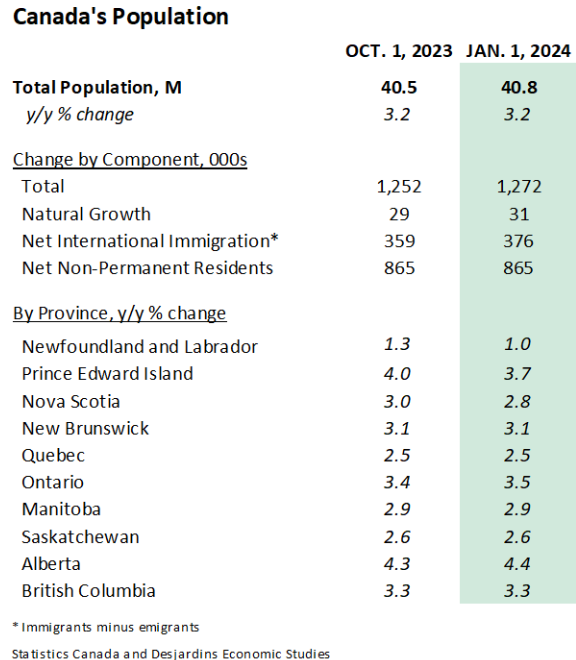
Last week, the National Bank of Canada published data derived from Statistics Canada’s labour market survey, showing that the nation’s population surged higher in April:
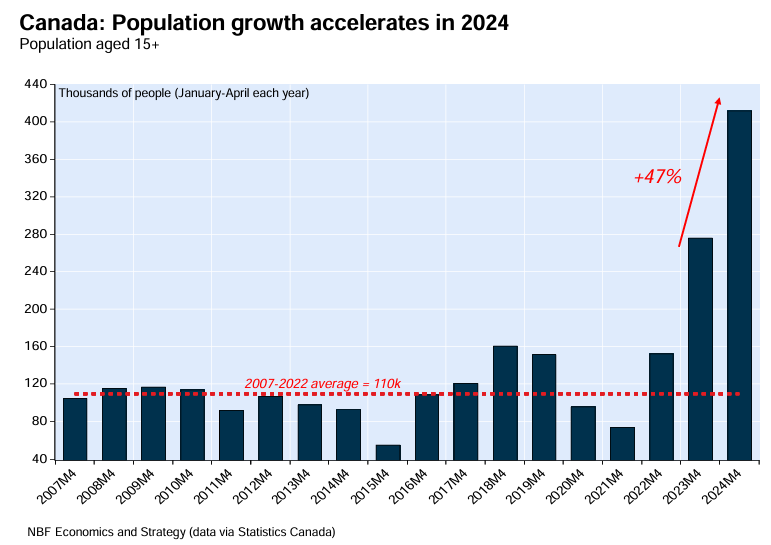
Canada’s excessive immigration, like Australia’s, has prevented the economy from falling into a technical recession.
However, like in Australia, per capita GDP growth has plunged:
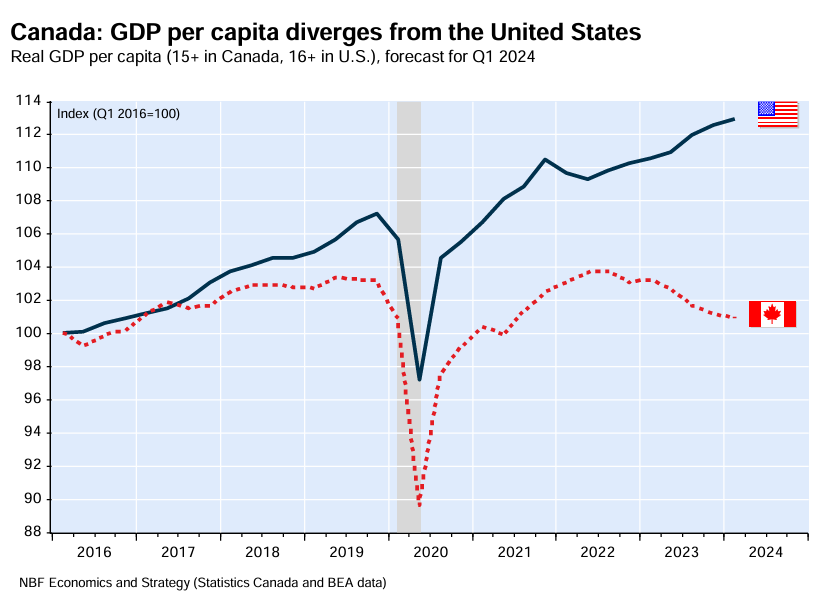
Productivity growth has also crashed due to ‘capital shallowing’, because Canada’s population increase has far exceeded business, infrastructure, and housing investment:
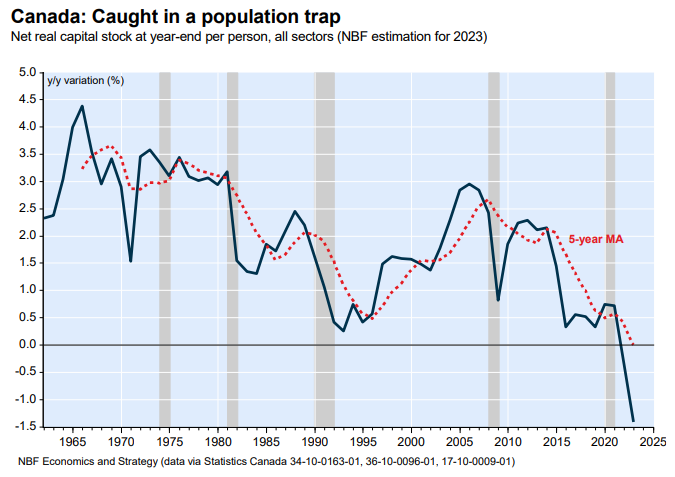
National Bank of Canada economists explained the dire productivity situation as follows in January:
“Why is our productivity record so bad? Could it be that our demographic ambitions are too high relative to the stock of capital available in the country? According to our calculations, Canada’s capital stock per capita collapsed close to 1.5% in 2023”:
“This means that our population is growing so fast that we do not have enough savings to stabilize our capital-labour ratio and achieve an increase in GDP per capita”.
“Simply put, Canada is in a population trap for the first time in modern history. More worrisome is the fact that the decline is not simply due to a lack of housing infrastructure”.
“In fact, the private non-residential capital stock to population ratio has been declining for seven years and is currently no higher than it was in 2012, while it is at a record high in the U.S”.
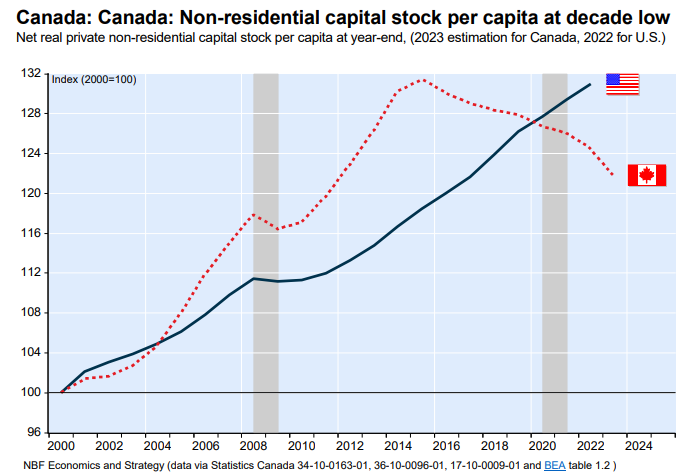
“Canada is caught in a population trap that has historically been the preserve of emerging economies. We currently lack the infrastructure and capital stock in this country to adequately absorb current population growth and improve our standard of living”.
Like Australia, Canada is also experiencing its worst-ever rental crisis because population expansion has overwhelmed housing supply:
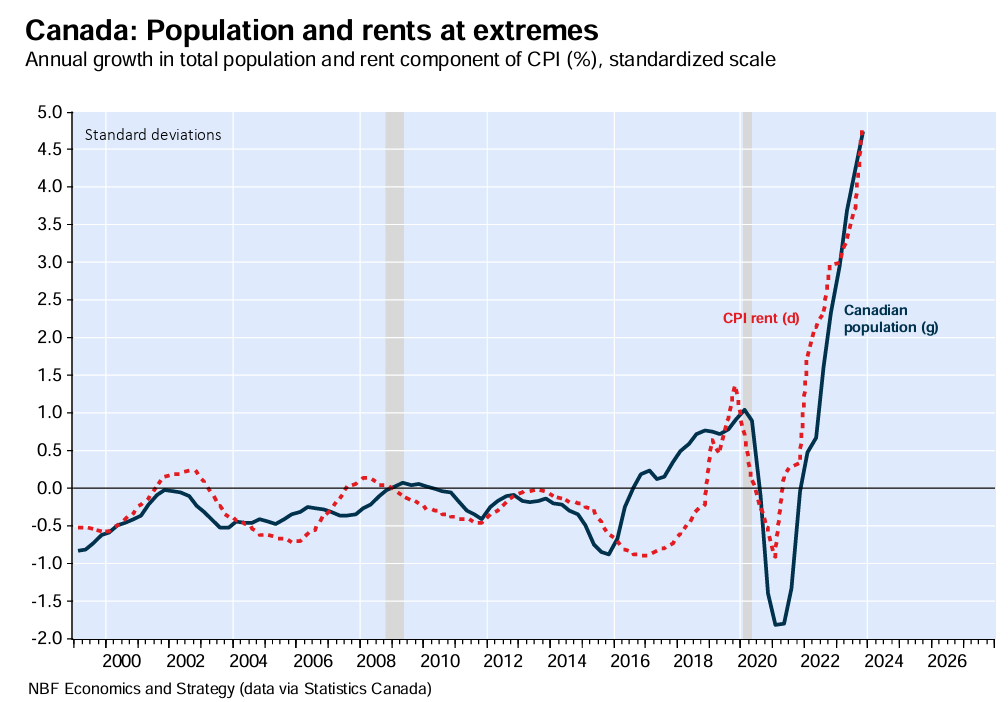
Then there is Canada’s labour market, which cannot generate enough jobs to keep pace with the growing supply of workers arriving from overseas.
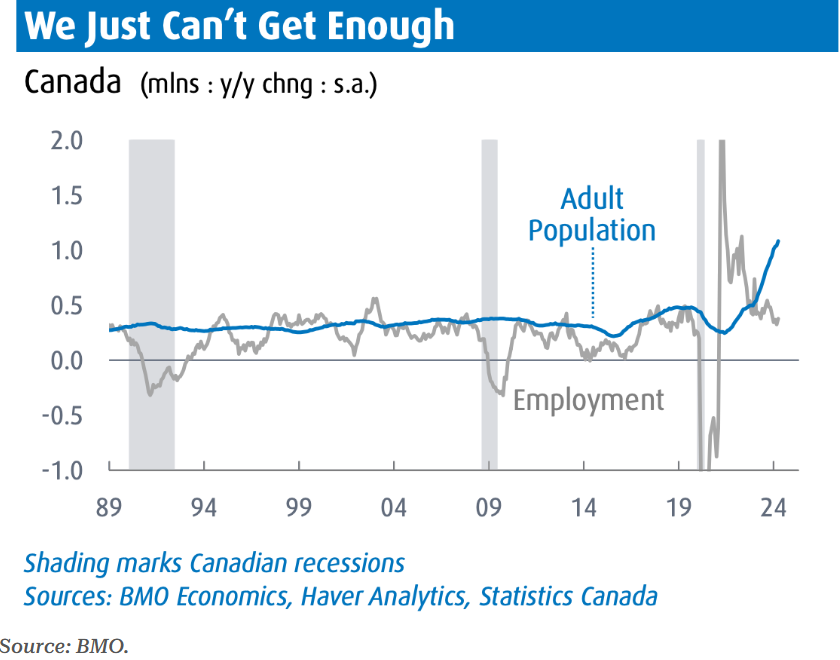
Canada needs to create at least 60,000 jobs per month to keep its unemployment rate from rising, assuming a stable participation rate.
However, Canada’s job growth has fallen well below this run rate, which has pushed the nation’s unemployment rate to 6.1%:
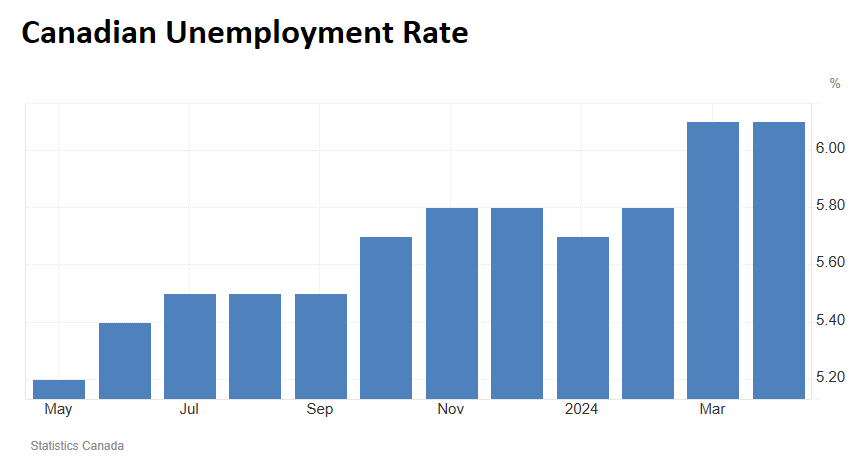
Between Q2 2022 and Q1 2024, the share of companies in Canada facing labour shortages decreased dramatically, from 48% to 27%:

As a result, it has also become increasingly difficult for new migrants and young Canadians to find work:

As I noted last week, Canada is a warning sign for Australia about what could happen if we continue with the same reckless mass migration program.
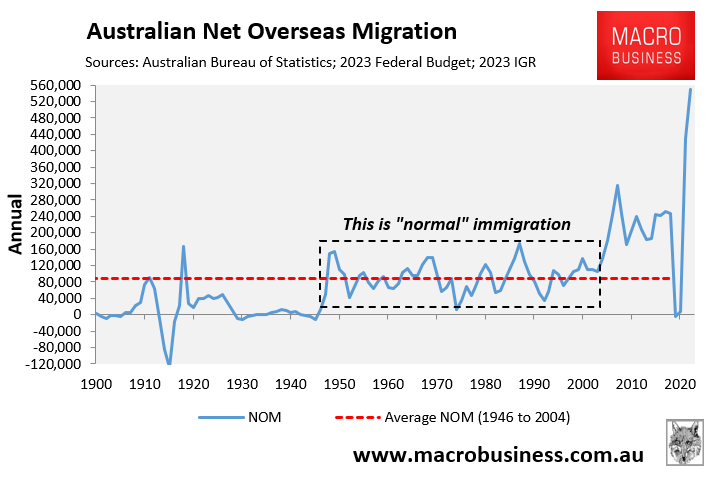
Australia is experiencing a similarly severe rental crisis, brought about by too many new renters seeking too few available homes:
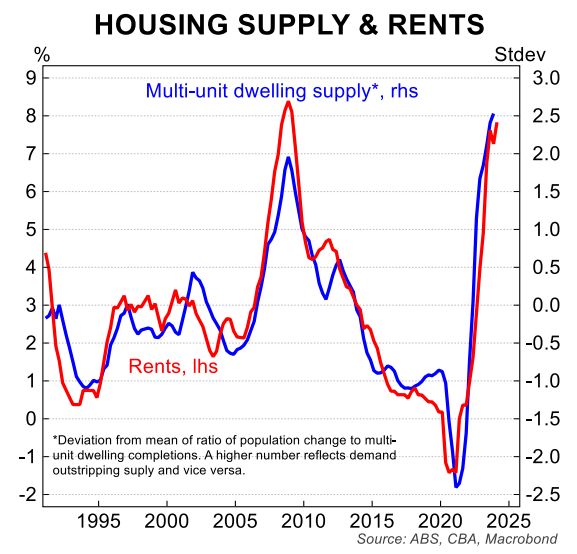
Australia’s productivity growth has also collapsed as decades of historically high net overseas migration has overrun business, infrastructure and housing investment:

Australia is currently tracking much better on unemployment, which stands at a comparatively favourable 4.1%:

However, the warning signs are present. Australia needs to create nearly 40,000 jobs per month to keep the unemployment rate stable:
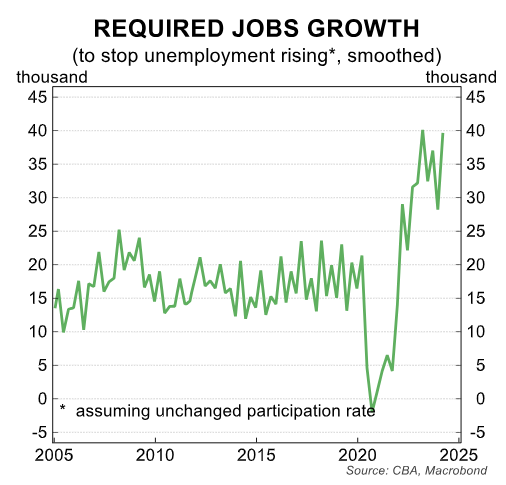
Australia’s economy has not been able to create enough jobs. Therefore, the number of applicants per job ad in April soared 55% above the same time in 2019:

Australia will also fall into a “population trap” with declining productivity, ongoing housing shortages, and per capita recessions if it maintains its high immigration policy.

